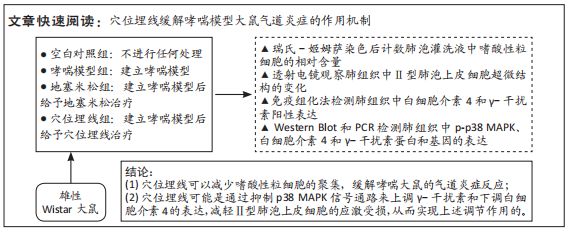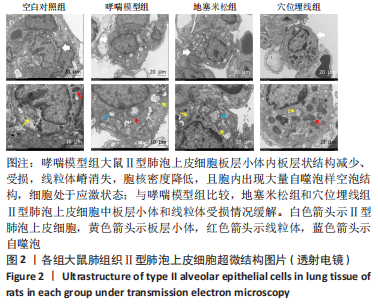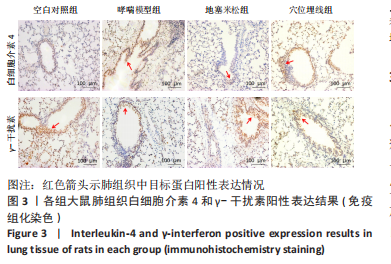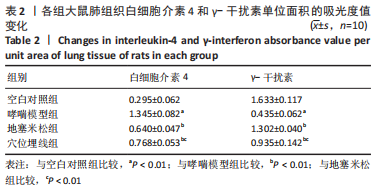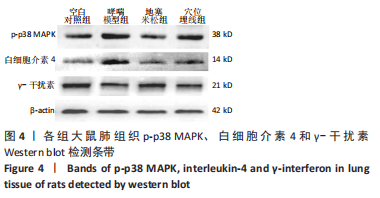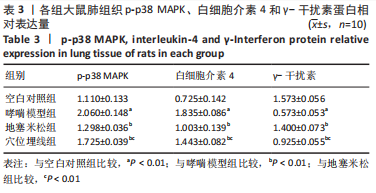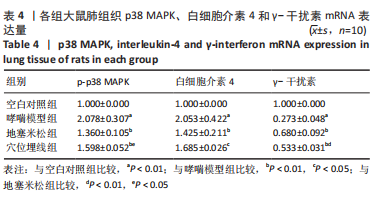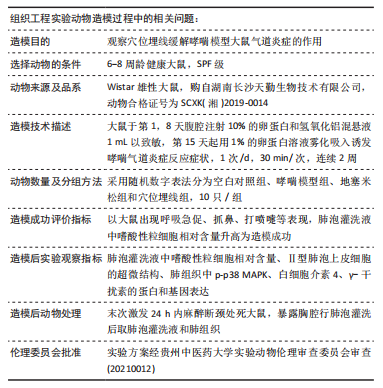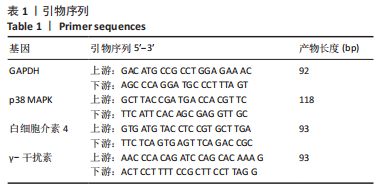[1] KURUVILLA ME, ANIJCHAROENKARN K, SHIH JA, et al. Epidemiology and risk factors for asthma. Respir Med. 2019;149:16-22.
[2] BONTINCK A, MAES T, JOOS G. Asthma and air pollution: recent insights in pathogenesis and clinical implications. Curr Opin Pulm Med. 2020;26(1):10-19.
[3] HELLINGS PW, STEELANT B. Epithelial barriers in allergy and asthma. J Allergy Clin Immunol. 2020;145(6):1499-1509.
[4] FREY A, LUNDING LP, EHLERS JC, et al. More Than Just a Barrier: The Immune Functions of the Airway Epithelium in Asthma Pathogenesis. Front Immunol. 2020;11:761.
[5] NELSON RK, BUSH A, STOKES J, et al. Eosinophilic Asthma. J Allergy Clin Immunol Pract. 2020;8(2):465-473.
[6] 常春,孙永昌.2022版《全球哮喘管理和预防策略》更新解读[J].中国全科医学,2022,25(35):4355-4362.
[7] GANS MD, GAVRILOVA T. Understanding the immunology of asthma: Pathophysiology, biomarkers, and treatments for asthma endotypes. Paediatr Respir Rev. 2020;36:118-127.
[8] RUARO B, SALTON F, BRAGA L, et al. The History and Mystery of Alveolar Epithelial Type II Cells: Focus on Their Physiologic and Pathologic Role in Lung. Int J Mol Sci. 2021;22(5):2566.
[9] DO DC, ZHANG Y, TU W, et al. Type II alveolar epithelial cell-specific loss of RhoA exacerbates allergic airway inflammation through SLC26A4. JCI Insight. 2021;6(14):e148147.
[10] ABONYO BO, ALEXANDER MS, HEIMAN AS. Autoregulation of CCL26 synthesis and secretion in A549 cells: a possible mechanism by which alveolar epithelial cells modulate airway inflammation. Am J Physiol Lung Cell Mol Physiol. 2005;289(3):L478-488.
[11] WANG J, ZHAO YL, ZHANG X, et al. Type II alveolar epithelial cell aryl hydrocarbon receptor protects against allergic airway inflammation through controlling cell autophagy. Front Immunol. 2022;13:964575.
[12] LYNN MC, CHRISTOPHER MW. Epithelial repair mechanisms in the lung. Am J Physiol Lung Cell Mol Physiol. 2010;298(6):L715-731.
[13] AHDIEH M, VANDENBOS T, YOUAKIM A. Lung epithelial barrier function and wound healing are decreased by IL-4 and IL-13 and enhanced by IFN-gamma. Am J Physiol Cell Physiol. 2001;281(6):C2029-2038.
[14] HURST SM, MCGHIE TK, COONEY JM, et al. Blackcurrant proanthocyanidins augment IFN-gamma-induced suppression of IL-4 stimulated CCL26 secretion in alveolar epithelial cells. Mol Nutr Food Res. 2010;54 Suppl 2:S159-170.
[15] COLEMAN SL, KRUGER MC, SAWYER GM, et al. Procyanidin A2 Modulates IL-4-Induced CCL26 Production in Human Alveolar Epithelial Cells. Int J Mol Sci. 2016;17(11):1888.
[16] 张琳.穴位埋线对哮喘大鼠Th1/Th2的影响[J].贵阳中医学院学报, 2008,30(3):46-47.
[17] 唐徐韵,陈盼碧,杜狄佳,等.穴位埋线对哮喘大鼠肺组织中p38MAPK信号通路及细胞间黏附分子-1、白细胞介素-4和嗜酸性粒细胞的影响[J].针刺研究,2022,47(2):129-134.
[18] 李泳兴,钟鸣,王勇,等.常用哮喘动物模型的建立[J].中国比较医学杂志,2020,30(11):97-101.
[19] 崔瑾,陈盼碧,杨孝芳,等.简易穴位埋线对哮喘大鼠ICAM-1和NF-κB表达及气道炎症的影响[J].中国针灸,2010,30(2):141-145.
[20] 黄继汉,黄晓晖,陈志扬,等.药理试验中动物间和动物与人体间的等效剂量换算[J].中国临床药理学与治疗学,2004,9(9): 1069-1072.
[21] 中国针灸学会.实验动物常用穴位名称与定位第2部分:大鼠[J].针刺研究,2021,46(4):351-352.
[22] 赵文翰,许坚,符丽.基于痰饮理论治疗支气管哮喘气道黏液高分泌的思路探索[J].辽宁中医杂志,2021,48(5):68-70.
[23] YANG M, CHEN JY, WEI W. Dimerization of glucocorticoid receptors and its role in inflammation and immune responses. Pharmacol Res. 2021;166:105334.
[24] ZDZIARSKI P, PASCIAK M, GAMIAN A. Microbiome Analysis and Pharmacovigilance After Inhaled Glucocorticoid: Oral Dysbiosis With the Isolation of ThreeRothiaSpecies and Subsequent Sjögren’s Syndrome. Front Pharmacol. 2022;13:636180.
[25] SLISZ T, VASAKOVA M. The burden of corticosteroid overload in severe and difficult to treat asthma: how to reduce this? Curr Opin Pulm Med. 2020;26(1):90-96.
[26] CHEN H, SUN J, HUANG Q, et al. Inhaled Corticosteroids and the Pneumonia Risk in Patients With Chronic Obstructive Pulmonary Disease: A Meta-analysis of Randomized Controlled Trials. Front Pharmacol. 2021;12:691621.
[27] 罗秋锐,宋小琴,王荣丽.sirtinol与地塞米松对哮喘模型小鼠体内沉默信息调节蛋白1和白细胞介素5水平的影响[J].中国组织工程研究,2022,26(17):2720-2725.
[28] CARAMORI G, NUCERA F, MUMBY S, et al. Corticosteroid resistance in asthma: Cellular and molecular mechanisms. Mol Aspects Med. 2022;85:100969.
[29] CANNA RL, LICCARDO D, ZHANG P, et al. Yap/Taz regulate alveolar regeneration and resolution of lung inflammation. J Clin Invest. 2019; 129(5):2107-2122.
[30] 支佳琦,王青青.肺泡上皮细胞在肺部免疫中的作用[J].中国免疫学杂志,2018,34(10):1596-1601.
[31] ASPAL M, ZEMANS RL. Mechanisms of ATII-to-ATI Cell Differentiation during Lung Regeneration. Int J Mol Sci. 2020;21(9):3188.
[32] PARIMON T, YAO CF, STRIPP BR, et al.Alveolar Epithelial Type II Cells as Drivers of Lung Fibrosis in Idiopathic Pulmonary Fibrosis. Int J Mol Sci. 2020;21(7):2269.
[33] OBENG E. Apoptosis (programmed cell death) and its signals - A review. Braz J Biol. 2021;81(4):1133-1143.
[34] LI ZY, WU YF, XU XC, et al. Autophagy as a double-edged sword in pulmonary epithelial injury: a review and perspective. Am J Physiol Lung Cell Mol Physiol. 2017;313(2):L207-L217.
[35] ANDREA M, SUSANNA B, FRANCESCA N, et al. The emerging role of type 2 inflammation in asthma. Expert Rev Clin Immunol. 2021;17(1): 63-71.
[36] HAMMAD H, LAMBRECHT BN. The basic immunology of asthma. Cell. 2021;184(6):1469-1485.
[37] RAO SP, RASTLE-SIMPSON S, DILEEPAN M, et al. Procedures to Evaluate Inflammatory and Pathological Changes During Allergic Airway Inflammation. Methods Mol Biol. 2021;2223:217-236.
[38] RAVANETTI L, DIJKHUIS A, DEKKER T, et al. IL-33 drives influenza-induced asthma exacerbations by halting innate and adaptive antiviral immunity. J Allergy Clin Immunol. 2019;143(4):1355-1370.e16.
[39] CHAO CL, WANG CJ, HUANG HW, et al. Poria cocosModulates Th1/Th2 Response and Attenuates Airway Inflammation in an Ovalbumin-Sensitized Mouse Allergic Asthma Model. Life (Basel). 2021;11(5):372.
[40] LI Q, ZHAI CM, WANG GD, et al. Ginsenoside Rh1 attenuates ovalbumin-induced asthma by regulating Th1/Th2 cytokines balance. Biosci Biotechnol Biochem. 2021;85(8):1809-1817.
[41] SONG YL, WANG ZG, JIANG JZ, et al. DEK-targeting aptamer DTA-64 attenuates bronchial EMT-mediated airway remodelling by suppressing TGF-β1/Smad, MAPK and PI3K signalling pathway in asthma. J Cell Mol Med. 2020;24(23):13739-13750.
[42] UMANNOVA L, MACHALA M, TOPINKA J, et al. Benzo[a]pyrene and tumor necrosis factor-α coordinately increase genotoxic damage and the production of proinflammatory mediators in alveolar epithelial type II cells. Toxicol Lett. 2011;206(2):121-129.
[43] 赵蕊,陈芳艳,韩黎.肺泡上皮细胞应对烟曲霉感染过程中胞内双特异性磷酸酶表达规律的研究[J].中国真菌学杂志,2020,15(3): 129-133.
[44] 张静.p38MAPK信号通路与LPS致大鼠Ⅱ型肺泡上皮细胞线粒体分裂的关系:离体实验[D].天津:天津医科大学,2020. |
